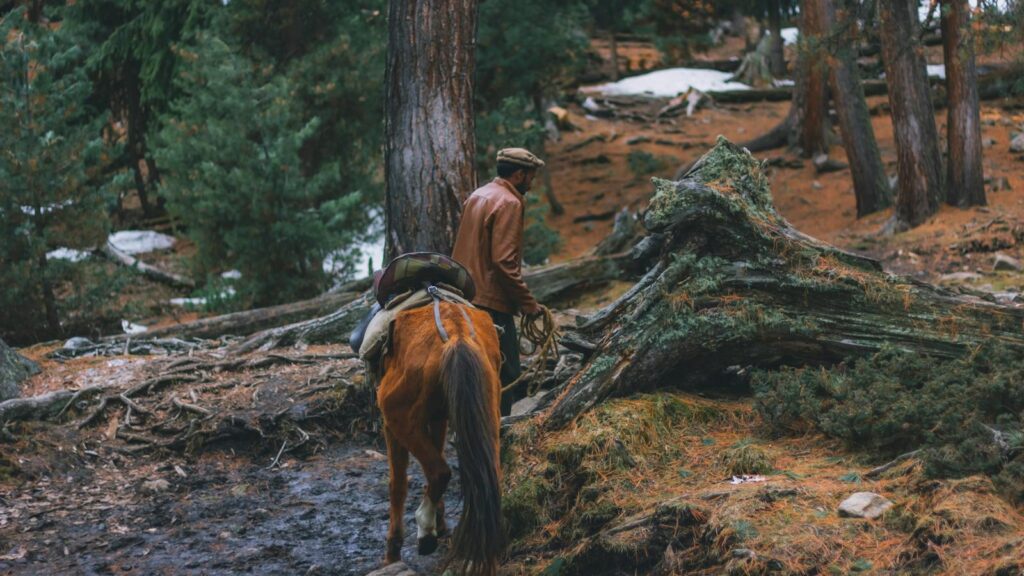
Horses are naturally cautious animals with a strong instinct for self-preservation. Teaching them to confidently navigate obstacles like tarps, logs, and bridges is an essential part of creating a well-rounded, versatile equine partner. This training not only builds trust between horse and handler but also prepares the horse for real-world situations they might encounter on trails or in competition. Whether you’re preparing for trail rides, competitive obstacle courses, or simply want to improve your horse’s confidence, this comprehensive guide will walk you through the process of teaching your equine companion to tackle these common obstacles with ease and confidence.
Understanding Your Horse’s Natural Caution

Horses are prey animals with an innate sensitivity to potential dangers, making them naturally skeptical of unfamiliar objects or surfaces. When a horse encounters something unusual like a crinkly tarp or an elevated bridge, their first instinct may be to flee rather than investigate. This response stems from their evolutionary development as animals that survived by quickly escaping perceived threats. Understanding this fundamental aspect of equine psychology is crucial before beginning obstacle training. Rather than forcing a horse through their fear, effective training acknowledges this natural caution and works to build confidence gradually. By respecting your horse’s instinctive responses, you create a foundation of trust that will serve your training goals more effectively than pushing too hard too fast.
Essential Safety Considerations
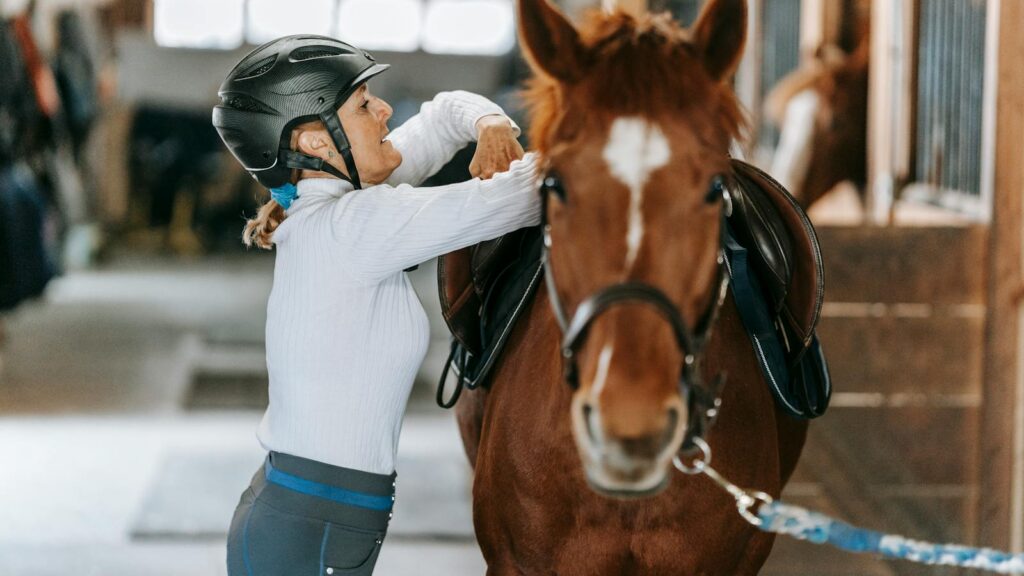
Before beginning obstacle training, ensuring safety for both you and your horse must be your top priority. Always wear appropriate safety gear including a helmet, gloves, and sturdy footwear with a heel to prevent your foot from sliding through the stirrup. Choose a contained training area with good footing and minimal distractions where your horse feels relatively comfortable and secure. Never tie your horse during obstacle training, as this can trigger panic if they feel trapped when confronting something frightening. Have an experienced handler present when first introducing particularly challenging obstacles, especially with younger or more reactive horses. Remember that patience is not just a virtue in obstacle training—it’s a safety requirement that prevents dangerous situations from developing.
Establishing Trust Before Obstacle Work
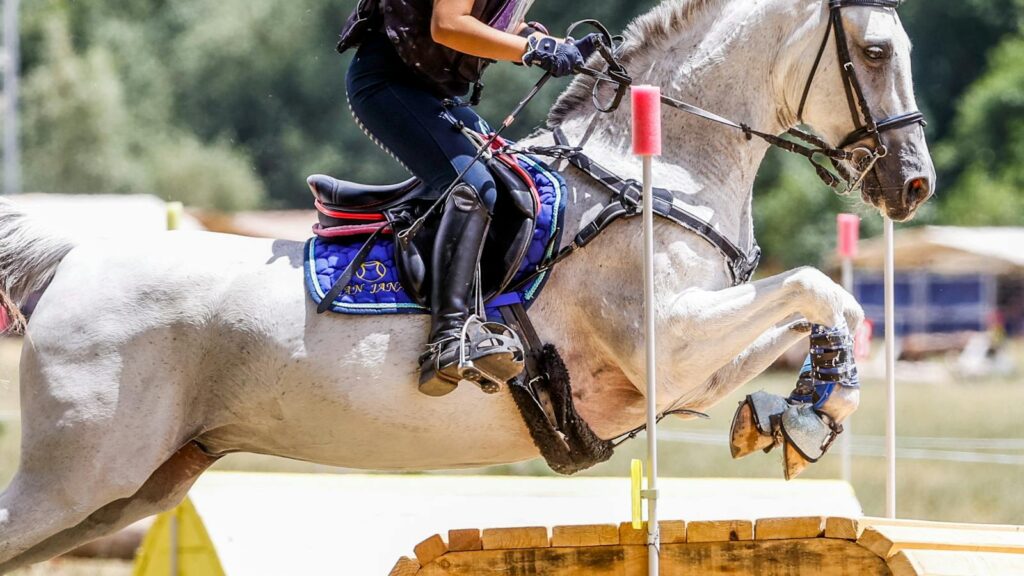
Building a foundation of trust is paramount before introducing any challenging obstacles to your horse. Spend time developing basic groundwork skills including consistent responses to pressure, proper leading techniques, and reliable stop and back cues. Your horse should willingly follow your lead and demonstrate relaxed body language when working with you in familiar environments. Practice exercises that gauge and develop your horse’s willingness to try new things, such as walking over ground poles or approaching unfamiliar objects. Pay attention to your horse’s emotional state throughout these exercises, noting signs of tension like raised head, widened eyes, or flared nostrils. Only proceed to more challenging obstacles when your horse consistently demonstrates trust in your leadership during these preliminary exercises.
Starting with Tarp Training

Tarps make excellent introductory obstacles due to their combination of unusual appearance, sound, and feel underfoot. Begin by allowing your horse to inspect a folded tarp from a distance, giving them time to observe it without pressure. Once comfortable, place the tarp flat on the ground and lead your horse around it, gradually decreasing the distance until they’re walking alongside it. Use positive reinforcement like verbal praise or a treat when they show curiosity rather than fear. Next, encourage your horse to touch the tarp with their nose, rewarding even small interactions. When they’re comfortable touching it, ask them to place one hoof on the edge of the tarp, then gradually work up to walking across it completely. Remember that the crackling sound and shifting sensation underfoot are what many horses find most concerning, so patience during this phase pays dividends in building confidence.
Progressive Desensitization Techniques

Desensitization is the systematic process of reducing your horse’s reaction to stimuli through gradual, controlled exposure. Begin with whatever level of exposure your horse can tolerate without showing significant stress, which might mean simply standing near a folded tarp or viewing a bridge from a distance. Maintain this level of exposure until your horse shows clear signs of relaxation like lowering their head, softening their eye, licking and chewing, or sighing. Only then should you slightly increase the challenge, perhaps by unfolding the tarp partially or moving a step closer to the bridge. This incremental approach prevents flooding—overwhelming your horse with too much stimulus at once—which can create more fear rather than confidence. The key to effective desensitization is recognizing and respecting your horse’s threshold while consistently rewarding calm behavior.
Log Crossing Fundamentals
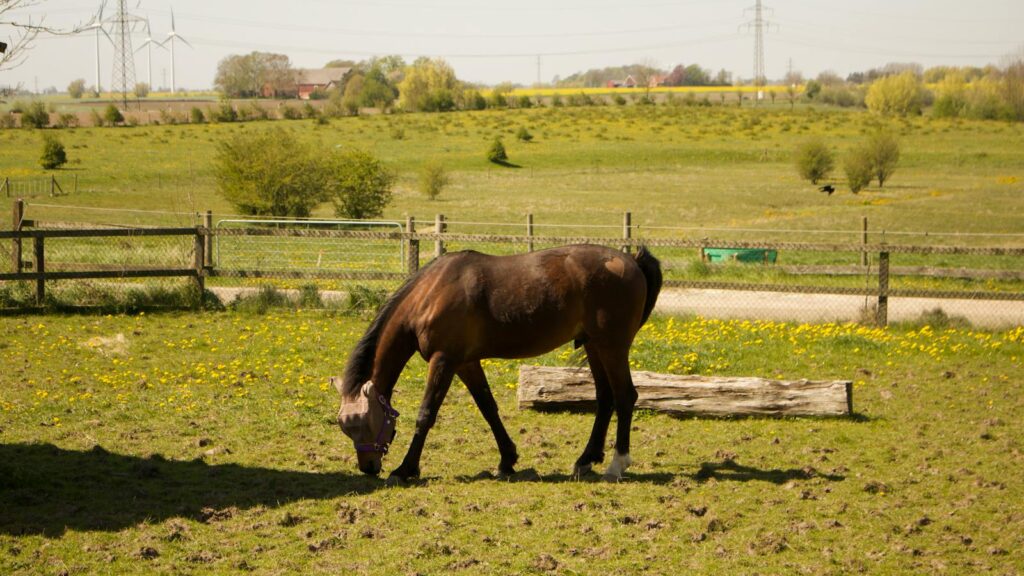
Logs present a different type of challenge for horses, requiring them to lift their feet higher and develop awareness of where they’re placing their hooves. Start with a small, stable log that won’t roll when stepped on, placing it in an area where your horse feels comfortable. Approach the log perpendicular to its length, as horses find it easier to step over an obstacle straight-on rather than at an angle. Walk your horse up to the log and give them time to investigate it before asking them to step over. If they seem hesitant, you can demonstrate by stepping over the log yourself while leading them. Once your horse can confidently step over a single small log, gradually introduce larger logs or multiple logs spaced a few feet apart. This progression helps develop your horse’s proprioception—their awareness of where their feet are in space—which is valuable for all types of riding.
Bridge Crossing: Building Height Confidence

Bridge crossings combine multiple challenges: elevation, potential movement, and often an unusual surface texture or sound. Begin with a very low, solid bridge structure with good traction and minimal movement. Some trainers create starter bridges using sturdy plywood secured to the ground with minimal elevation. Approach the bridge the same way you introduced other obstacles—allowing investigation time and rewarding any positive interaction. Once your horse willingly places their front feet on the bridge, give them time to process the new sensation before encouraging them to walk completely across. The rhythm of crossing is important: maintain steady forward movement without rushing, as hesitation midway can lead to backing up or refusing. After mastering a simple bridge, gradually introduce higher or narrower bridges, always ensuring they’re structurally sound and appropriate for your horse’s size and confidence level.
Using Positive Reinforcement Effectively
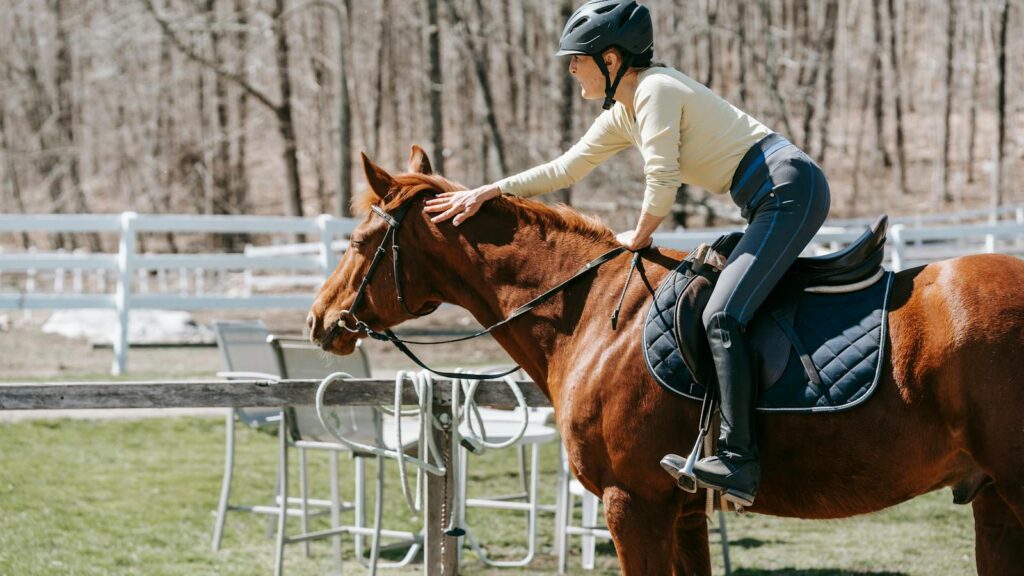
Positive reinforcement is a powerful tool for obstacle training that associates new experiences with pleasant outcomes. Timing is crucial—reward your horse immediately when they demonstrate the desired behavior, even if it’s just a small step in the right direction. Effective rewards include verbal praise in a calm, encouraging tone, a gentle pat on the neck, a brief rest, or food treats if your horse is food-motivated. Clicker training, which pairs a distinct clicking sound with rewards, can be particularly effective for obstacle work because it marks the exact moment your horse does something right. Be consistent with your rewards so your horse clearly understands which behaviors earn positive feedback. Remember that forcing a fearful horse through an obstacle may get immediate compliance but undermines trust and creates negative associations that make future training more difficult.
Troubleshooting Common Resistance Problems

When horses resist obstacles, understanding the root cause is essential for effective resolution. A common issue is rushing over obstacles, which usually indicates anxiety rather than disobedience. Practice approaching and crossing obstacles at a deliberate walk, halting calmly before and after to promote thoughtfulness. For horses that plant their feet and refuse to move, avoid the temptation to pull harder on the lead rope, which can trigger opposition reflex. Instead, try asking for a single step in any direction to break the “frozen” state, then redirect toward the obstacle. Some horses will attempt to go around obstacles rather than over them; counter this by creating a chute with poles or fencing that guides them toward the correct path. Always rule out physical discomfort by checking that your horse is sound and not experiencing pain that might make obstacle navigation difficult.
Working Through Fear Responses
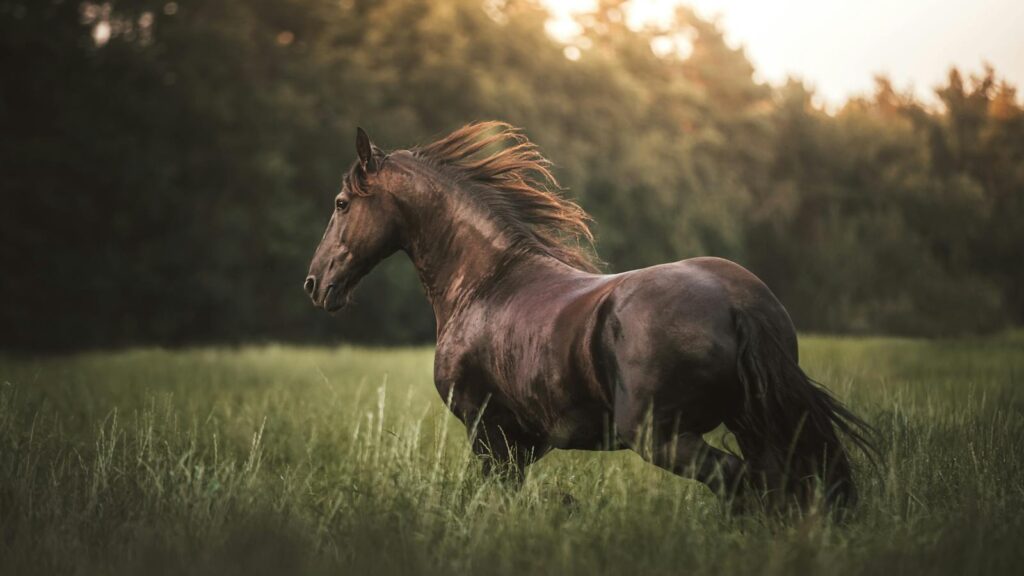
Fear responses in horses typically manifest as flight, freeze, or fight behaviors, each requiring a slightly different approach. For the horse that tries to flee, maintain calm control without escalating the situation through your own tension. Create distance from the scary object until the horse can relax, then gradually decrease this distance over multiple sessions. The freezing horse benefits from gentle, rhythmic movement requests like asking them to yield their hindquarters or take a step forward and back. This breaks the paralysis without directly confronting the feared obstacle. For horses showing aggressive responses like striking or threatening to rear, maintain safe positioning and avoid punishment which can increase fear. Instead, redirect their attention to a simple, familiar task they can succeed at before approaching the obstacle again more gradually. Throughout all fear work, monitoring your own breathing and body language is crucial as horses quickly pick up on handler tension.
Building Obstacle Combinations
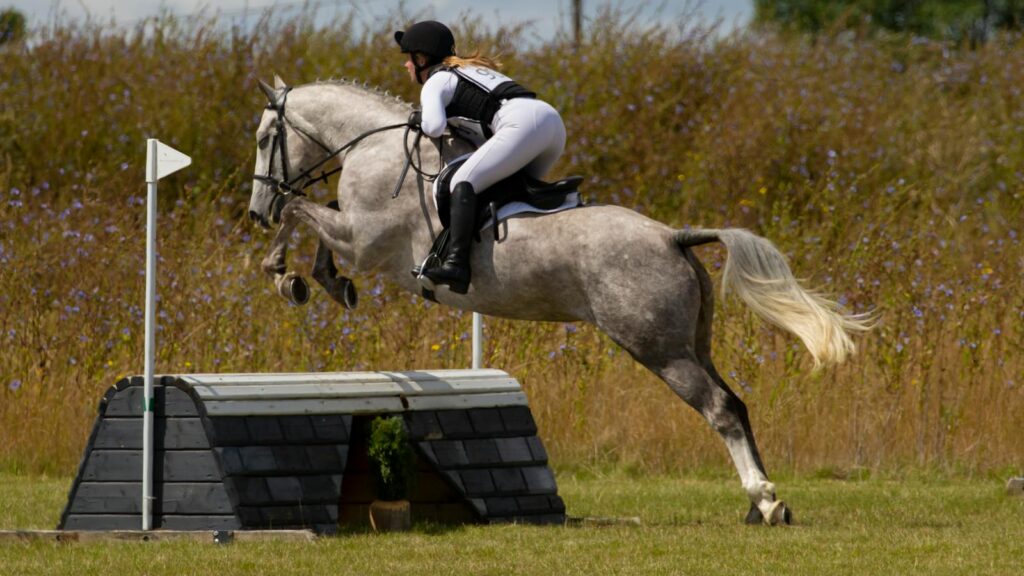
Once your horse navigates individual obstacles confidently, combining them creates new challenges that build advanced skills. Start by placing two familiar obstacles relatively far apart, allowing your horse to reset between each one. Gradually decrease the distance until your horse moves from one obstacle directly to the next. Create meaningful sequences that might be encountered in real-world situations, such as walking over a log, then crossing a bridge, followed by walking over a tarp. Vary the order of obstacles to prevent your horse from anticipating and merely going through motions without thinking. As your horse’s confidence grows, introduce distractions like flapping flags near obstacles or having a helper make noise while your horse navigates the course. These combination exercises develop your horse’s ability to think through complex situations while maintaining focus on your guidance.
Transitioning to Saddle Work
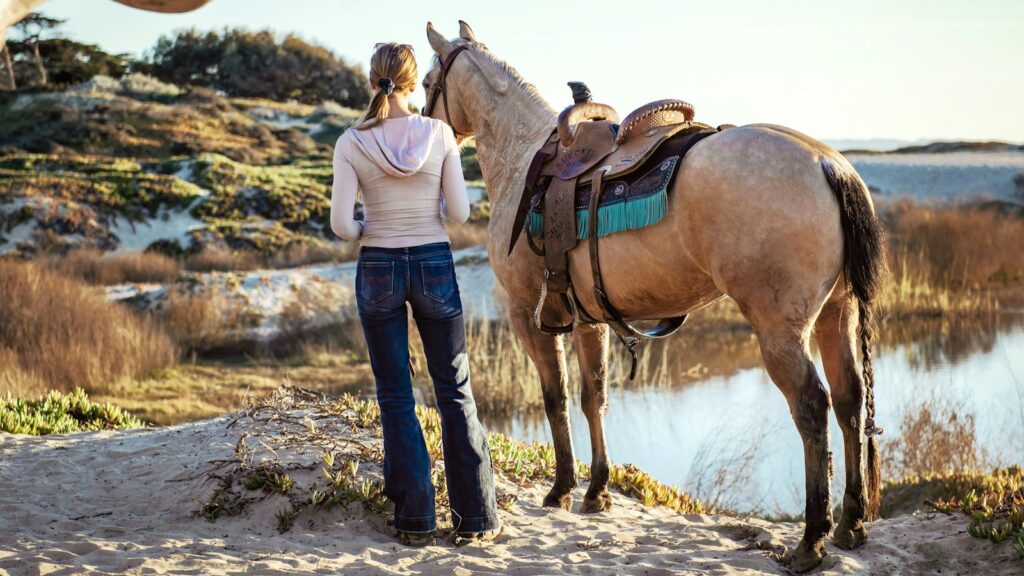
After establishing solid groundwork with obstacles, transitioning to under-saddle work requires careful progression. Begin by leading your horse across familiar obstacles while you’re in the saddle, which combines the security of groundwork with the new element of your weight on their back. Once comfortable with this, try riding toward an obstacle with a ground handler who can provide guidance if needed. Use familiar obstacles before introducing new challenges, and maintain the same patient, incremental approach you used during groundwork. Many horses experience a confidence regression when first navigating obstacles under saddle, so be prepared to temporarily simplify your expectations. Focus on maintaining relaxation throughout transitions, halts, and directional changes near and over obstacles. This comprehensive approach ensures your horse builds confidence that transfers between ground and mounted work.
Maintaining and Expanding Obstacle Skills
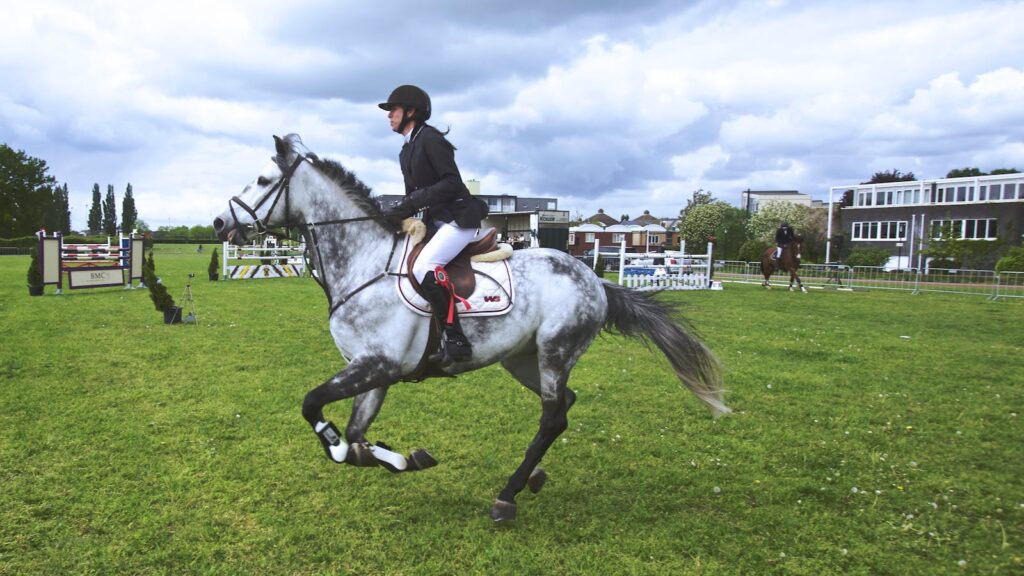
Like all training, obstacle skills require maintenance and continued development to remain reliable. Incorporate obstacle work into your regular training routine rather than treating it as a separate, occasional exercise. Periodically reintroduce familiar obstacles in new contexts, such as approaching from different directions or under varying weather conditions. Gradually increase difficulty by raising bridge heights, using noisier tarp materials, or adding elements like water crossings or narrow passages. Consider joining obstacle challenge events or play days where your horse can experience new environments while applying their obstacle skills. Keep sessions positive and end on successful notes, even if that means temporarily returning to simpler obstacles after attempting more challenging ones. This ongoing practice ensures your horse’s obstacle confidence becomes an ingrained skill rather than a temporary accomplishment.
Building Confidence Through Obstacle Training
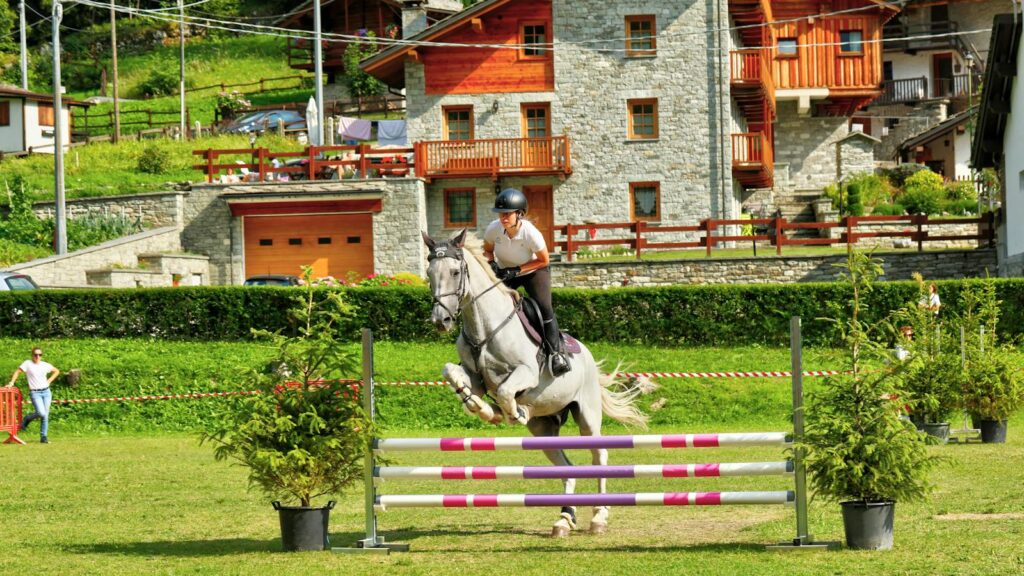
A confident, obstacle-savvy horse is truly a pleasure to ride and handle in any situation. By following these methodical training approaches that respect your horse’s natural instincts while building their courage, you’ll develop a partner who willingly faces new challenges with trust in your leadership. Remember that the journey of obstacle training offers benefits beyond the practical skill itself—it deepens the communication between you and your horse, enhances their overall confidence, and creates a more versatile equine companion. Whether navigating a woodland trail with fallen logs, crossing a stream on a wooden bridge, or competing in an obstacle course, the time invested in this fundamental training pays dividends in safety, enjoyment, and the special bond you share with your horse.






